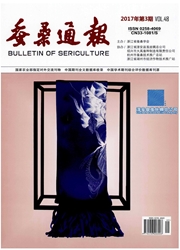

 中文摘要:
中文摘要:
生物材料的相容性一直是组织工程和再生医学领域的重要议题。组织细胞能对外界环境作出不同的响应,但只有在天然生长环境中(细胞外基质)细胞才能发挥其正常的功能。因此构建基于丝素蛋白的仿生生物材料是处理生物相容性的可行途径之一。本文介绍了细胞与细胞外基质相互作用的机理,总结了近年来丝素来源的生物材料影响细胞黏附、迁移、增殖和分化等行为的因素,包括材料的化学成分、拓扑结构(纤维尺寸、支架孔径和表面特性)以及力学特性,并在此基础上讨论了存在的问题及今后的发展方向,为设计新一代的生物材料提供参考和借鉴。
 英文摘要:
英文摘要:
Compatibility between biomaterials and organismhasis an important topic in the field of tissueengineering and regenerative medicine. Tissue cells respond differently to environments, while they function well only in the natural microenvironment where they live(extracellular matrix, ECM). It is a logical way to study biocompatibility by constructing silk fibroin(SF)- based biomimetic biomaterials. This review introduced the mechanism of interaction between cells and ECM, and summarized the effects of SF-based biomaterials on cell adhesion, migration, proliferation and differentiation in recent years, including chemical composition of biomaterials, topology(fiber size, scaffold pore size and surface characteristics), and mechanical properties. Moreover, on this basis existingproblems and future perspectives in this field were addressed to provide reference for the design of the next generation of biomaterials.
 同期刊论文项目
同期刊论文项目
 同项目期刊论文
同项目期刊论文
 Preparation of porous scaffolds from silk fibroin extracted from the silk gland of Bombyx mori (B. m
Preparation of porous scaffolds from silk fibroin extracted from the silk gland of Bombyx mori (B. m Bio-Templated Growth of Bone Minerals from Modified Simulated Body Fluid on Nanofibrous Decellulariz
Bio-Templated Growth of Bone Minerals from Modified Simulated Body Fluid on Nanofibrous Decellulariz NIR-induced highly sensitive detection of latent fingermarks by NaYF4:Yb,Er upconversion nanoparticl
NIR-induced highly sensitive detection of latent fingermarks by NaYF4:Yb,Er upconversion nanoparticl Biomimetic nucleation of hydroxyapatite crystals mediated by Antheraea pernyi (A. pernyi) silk seric
Biomimetic nucleation of hydroxyapatite crystals mediated by Antheraea pernyi (A. pernyi) silk seric Binrui Cao, Yang M, Ye Zhu, Xuewei Qu and Chuanbin Mao. Stem Cells Loaded with Nanoparticles as In V
Binrui Cao, Yang M, Ye Zhu, Xuewei Qu and Chuanbin Mao. Stem Cells Loaded with Nanoparticles as In V Fabrication of a novel blended membrane with chitosan and silk microfibers for wound healing: charac
Fabrication of a novel blended membrane with chitosan and silk microfibers for wound healing: charac Regulating of surface roughness of mineralized Antheraea pernyi silk sericin film and its effects on
Regulating of surface roughness of mineralized Antheraea pernyi silk sericin film and its effects on Reiterated Targeting Peptides on the Nanoparticle Surface Significantly Promote Targeted Vascular En
Reiterated Targeting Peptides on the Nanoparticle Surface Significantly Promote Targeted Vascular En Biomineralization of natural collagenous nanofibrous membranes and their potential use in bone tissu
Biomineralization of natural collagenous nanofibrous membranes and their potential use in bone tissu 期刊信息
期刊信息
